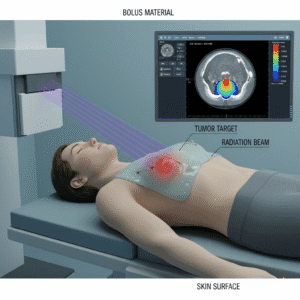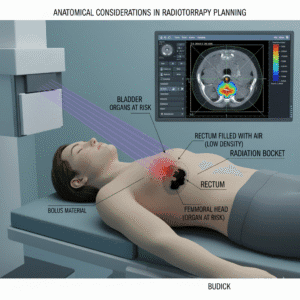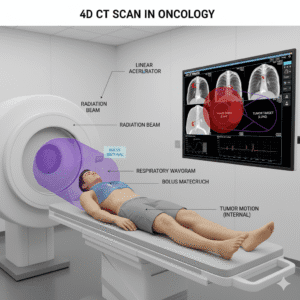
Cancer Info
What are lymphomas?
Lymphomas are cancers that originate in the lymphatic system, which is part of the immune system. There are two main types: Hodgkin lymphoma and non-Hodgkin lymphoma. They affect lymphocytes, a type of white blood cell that helps fight infections.
How common are lymphomas in India?
Lymphomas are among the most common blood cancers in India. They account for about 5% of all cancer cases. The incidence is increasing, with an estimated 40,000 new cases each year, affecting both men and women across various age groups.
What are the symptoms of lymphoma?
Common symptoms include:
- Swollen lymph nodes (usually painless)
- Fever
- Night sweats
- Unexplained weight loss
- Fatigue
- Itching These symptoms can vary and may be mistaken for other illnesses.
How is lymphoma diagnosed?
Diagnosis typically involves:
- A physical exam to check for swollen lymph nodes
- Blood tests to assess overall health and check for specific markers
- Imaging tests (like CT scans or PET scans) to locate enlarged lymph nodes
- A biopsy to confirm the presence of cancer cells in the lymph nodes or other tissues.
How do doctors determine the stage of lymphoma?
Staging helps determine how far the cancer has spread. The Ann Arbor staging system is commonly used:
- Stage I: One lymph node region affected.
- Stage II: Two or more lymph node regions on the same side of the diaphragm.
- Stage III: Lymph nodes on both sides of the diaphragm.
- Stage IV: Spread to organs outside the lymphatic system, like the liver or bones.
What is the management based on staging?
Management depends on the stage and type of lymphoma:
- Stage I: Often treated with localized radiation or a combination of chemotherapy and radiation.
- Stage II: Usually treated with chemotherapy followed by radiation.
- Stage III: Generally requires more intensive chemotherapy, possibly combined with radiation.
- Stage IV: May involve chemotherapy, immunotherapy, or clinical trials, focusing on palliative care if needed.
What role does surgery play in lymphoma treatment?
Surgery is not usually the primary treatment for lymphoma. However, it may be used to obtain a biopsy or remove a large mass if it’s causing symptoms. Most treatment focuses on chemotherapy and radiation.
When is radiotherapy used?
Lymphomas are highly radiosensitive and the responses are usually very good with radiation. It is commonly used:
- After chemotherapy to target remaining cancer cells.
- As a primary treatment for localized lymphoma.
- To relieve symptoms, such as pain caused by enlarged lymph nodes.
When is chemotherapy or immunotherapy used in lymphoma treatment?
Chemotherapy is the mainstay treatment of lymphomas. uses powerful drugs to kill cancer cells or stop their growth. Treatment typically involves a combination of drugs, given in cycles over several months. The specific regimen depends on the lymphoma type and stage.
Immunotherapy helps the immune system recognize and attack cancer cells. It can be effective for certain types of lymphoma, particularly relapsed or refractory cases. Monoclonal antibodies and CAR T-cell therapy are examples of immunotherapy used for lymphomas.
What types of bone marrow transplantation are there?
There are two main types:
- Autologous transplant: Uses the patient’s own stem cells, collected before chemotherapy.
- Allogeneic transplant: Uses stem cells from a donor. This is often done when the disease is more aggressive or has relapsed.
The duration of a bone marrow transplant can vary but typically lasts 2-4 weeks in the hospital, followed by several months of outpatient care. Costs in India can range from ₹15 lakhs to ₹30 lakhs, depending on the type of transplant and hospital.
. What is the role of total body radiotherapy in bone marrow transplantation?
Total body radiotherapy (TBI) is used before a bone marrow transplant to destroy cancer cells and suppress the immune system. This makes room for the new stem cells to grow. Radiotherapy is now a part of the conditioning regimen before the bone marrow transplant and used extensively worldwide.
How often should I have follow-ups after treatment?
Follow-up appointments are crucial and usually occur every 3-6 months for the first few years, then annually. These visits help monitor for recurrence and manage any long-term side effects of treatment.
During follow-ups, doctors may perform:
- Physical exams
- Blood tests (including complete blood count)
- Imaging tests (like CT or PET scans) as needed to monitor for recurrence.
What are the potential side effects of lymphoma treatments?
Side effects depend on the type of treatment. Common side effects include:
- Nausea and vomiting (from chemotherapy)
- Fatigue
- Increased risk of infections (from immunosuppressive treatments)
- Skin changes or irritation (from radiation) Discussing potential side effects with your doctor is essential for managing them.



